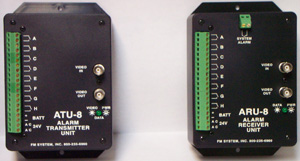REMOTE CONTROL OF CENTRALIZED VCR’S BY TEACHERS IN THE CLASSROOM
REMOTE CONTROL OF CENTRALIZED VCR’S BY TEACHERS IN THE CLASSROOM
By: Frank McClatchie
President, FM SYSTEMS, INC.
TEL: 1-800-235-6960
Two-way remote control of centralized instructional VCR’s is now possible over the same coaxial cable the sends the video base-band signal to the classroom. In this way, the teacher has full operational control of the centralized VCR to start, stop, reverse and restart the VCR at will while still retaining the advantages of a centralized instructional VCR facility.
In addition, the same equipment that enables the teacher to exert full control over the central VCR also enables the central location to exert a large number of control actions at the school room such as turning on the classroom video equipment, lights, air conditioning and even unlocking the schoolroom itself. In each case the signals providing these control actions are sent over the same coaxial cable that delivers the video signal to the classroom without affecting the picture in any way.
The equipments that makes this degree of remote control possible are called Alarm Transmitting Units (ATU-8) to initiate control signals and Alarm Receiver Units (ARU-8). Each module transmits up to eight (8) remote controls. Each CCTV coaxial cable can support up to 20 control channels enabling up to 160 individual and independent control signals to be sent in groups of 8 over any one coaxial cable. These control signals may be sent in either or both directions at one time (in groups of eight). This enables a virtually unlimited number of controls to be sent between the central VCR facility and the school rooms to be equipped to receive television transmissions.
This is a new concept for the control of distribution of video within a school in that it not only enables teachers to stop and start the central VCR on command, but to do so over the very same coaxial cable that delivers the video signal in the first place. All of these controls (in both directions) operate over the coaxial cable that is delivering the picture to the classroom, without interfering with the picture itself. The control signals will operate even if the video signal fails or is turned off.



